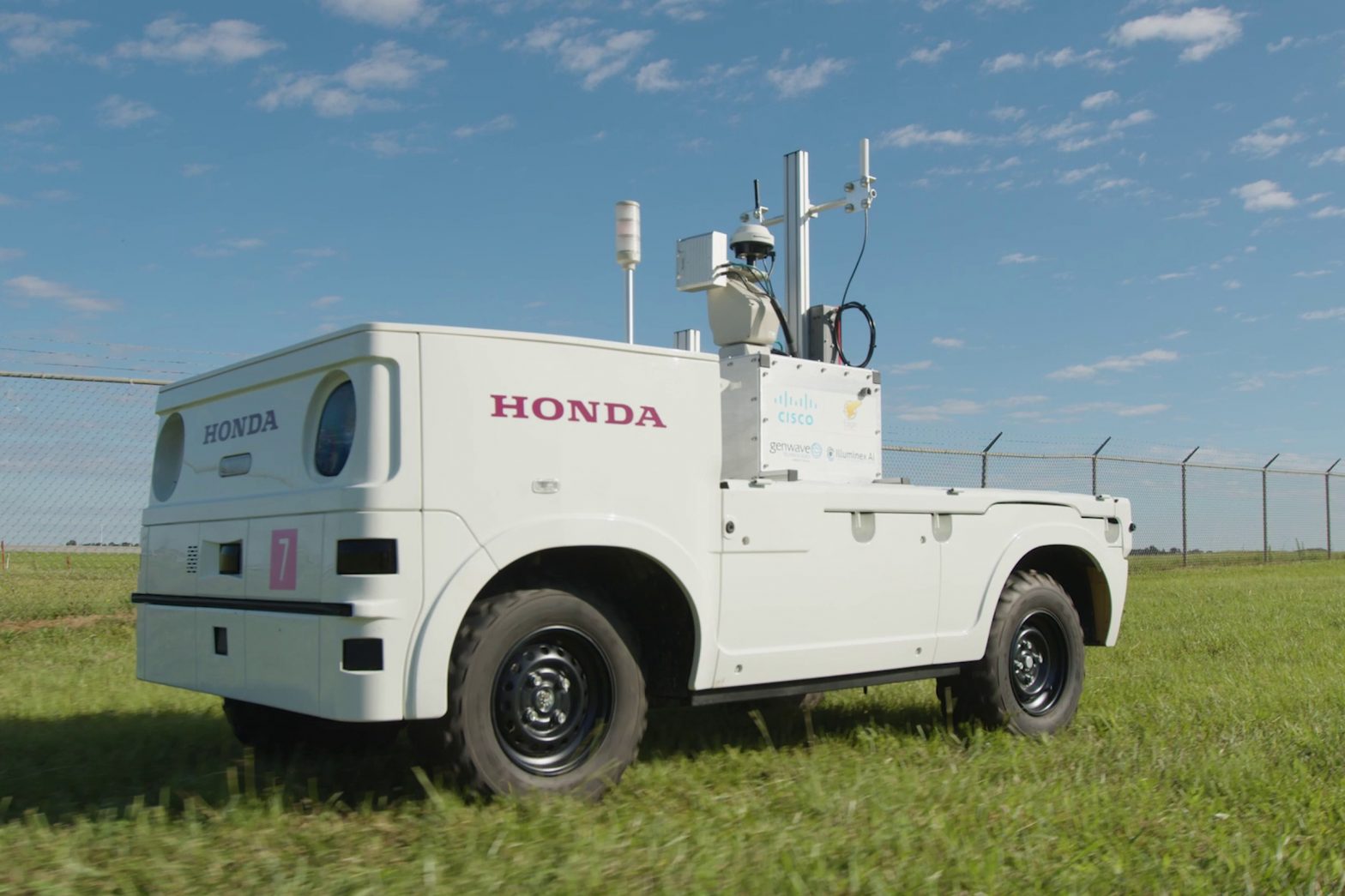/
The autonomous work vehicle is a prototype that will be tested out at Toronto’s airport.
Share this story
If you buy something from a Verge link, Vox Media may earn a commission. See our ethics statement.
:format(webp)/cdn.vox-cdn.com/uploads/chorus_asset/file/25008896/Honda_AWV___Perimeter_Fence_Inspection.png)
Honda’s latest robot is an autonomous work vehicle (AWV) designed to handle all the boring, repetitive tasks at airports. It’s also meant to demonstrate that autonomous vehicles can have other purposes that don’t involve jamming up city streets or obstructing emergency vehicles.
The company is sending its first prototype to the Toronto Pearson Airport as part of a demonstration of how AI, robotics, and autonomous vehicle technology can help address many of the challenges facing airports, including labor shortages, safety, and emissions. The work vehicle was first introduced as a concept by Honda at CES in 2018 and is now being put to use.
Some of the tasks handled by the AWV include: driving around the perimeter fence of an airport looking for security breaches; hauling and transporting cargo around the tarmac; and towing baggage carts. The vehicle can also create maps for future planning and detect obstacles. It’s designed to go on- or off-road, and it’s fully electric, meaning there are no tailpipe emissions.
Right now, the AWV is only being used for perimeter fence inspection at Toronto’s airport. But in the future, Honda says it can be easily repurposed for cargo hauling, mowing and groundskeeping, or debris removal. The AWV uses radar and lidar for obstacle detection as well as GPS for location.
:format(webp)/cdn.vox-cdn.com/uploads/chorus_asset/file/25008973/Honda_AWV___Hauling_Aircraft_Part.png)
Honda uses equipment and technology from a host of other companies, including wireless tech from Cisco and Genwave, operating systems from Illuminex AI, and cloud-based software from Eagle Aerospace’s AIROps.
Of course, Honda has a lot of experience in the world of robotics, including its beloved Asimo robot that was retired in 2018. Over the years, Asimo played soccer with President Barack Obama, won over Kelly Ripa, had a dancing group, and had some clumsy moments like this terrible fall while trying to walk up a flight of stairs.
The company has said it sees the future of robotics as rooted in human interaction, which explains why it’s focused on a variety of use cases. At the 2018 CES, Honda introduced a quartet of new robot concepts, including a companion bot, an autonomous off-road vehicle (and the precursor to the AWV), and a pair of “mobility” concepts for moving people and things about.
:format(webp)/cdn.vox-cdn.com/uploads/chorus_asset/file/25008972/Honda_AWV___Hauling_Aircraft_Parts_2.png)
